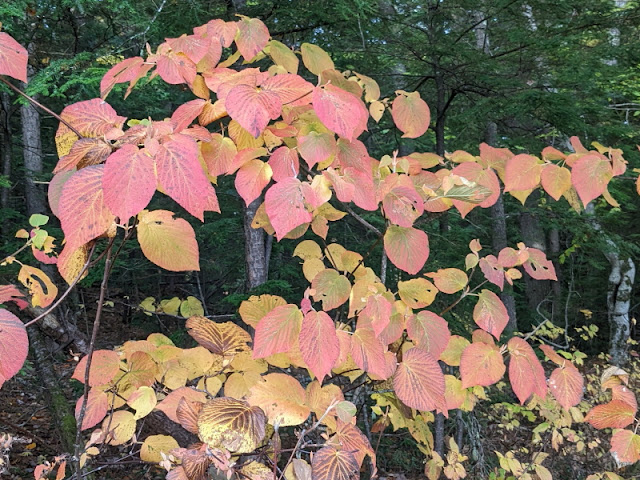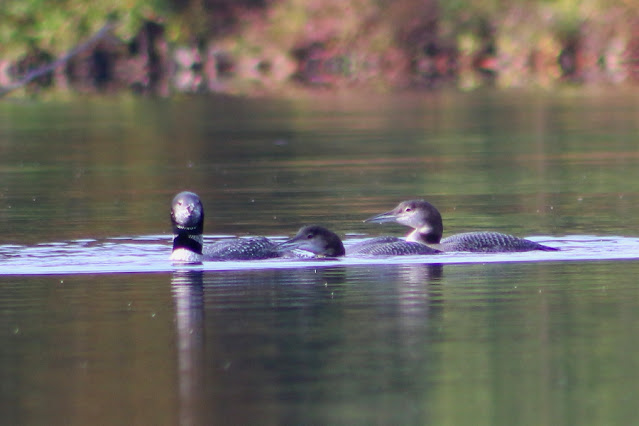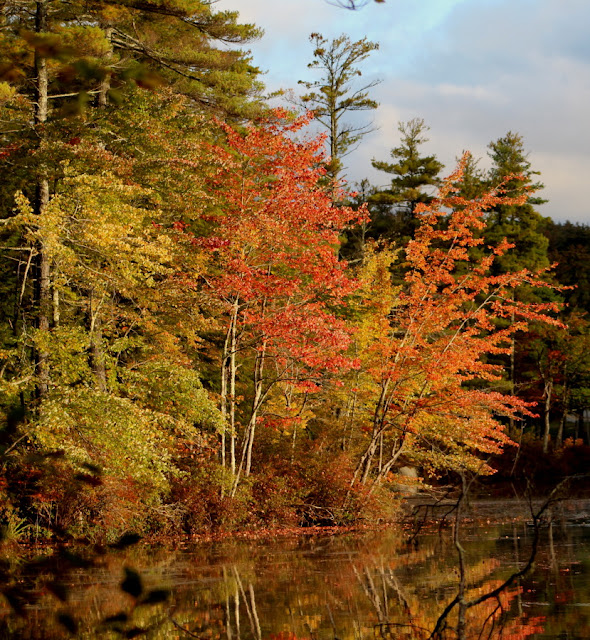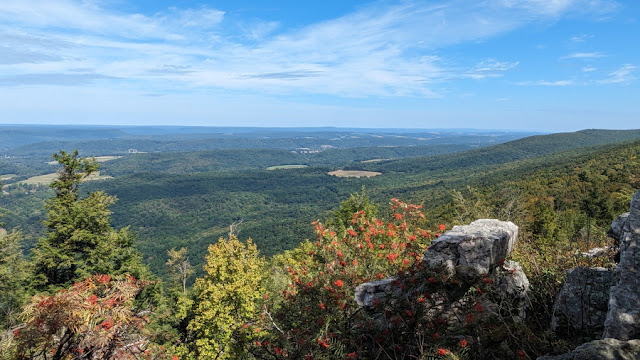Imprint this image in your memory:
 |
| Spotted Lanternfly (Lycorma delicatula) |
There were posters with warnings about the invasive spotted lanternfly everywhere in Pennsylvania. I only saw one during our visit, on a picnic table right at our campground. It's a pretty bug, but with an ugly impact on trees and crops, including grapes, apples, hardwood trees, and - horror of horrors - hops! The spotted lanternfly is native to Asia and was first found in North America in Pennsylvania in 2014 and is now estimated to cause crop damages of $500M in just that one state. It has since spread to a large portion of the United States including as far north as Massachusetts. It's been found in California - look out wine country! It hasn't been seen in New Hampshire yet, but it will be here soon so it's worth recognizing it so when you see one you can report it so preventive steps can be taken. You can find more information about spotted lanternflies from the USDA here. We were very careful to be sure none of these pests were stowaways on our trip home.
We returned from our excursion south in time to enjoy this fabulous summer week in New Hampshire. There are still lots of boats on the lake and plenty of people were out taking advantage of the beautiful weather.
Linda and I had a few trips on the lake ourselves on those warm days. Passing behind Bryant Island at one point we must have flushed out a bald eagle that was perched there, as it flew directly over us.
It didn't go far, just across the water to perch on a white pine on one of the Rawson Wood Islands.
On that same outing we saw that both of our juvenile loons are still here, as is at least one parent.
 |
| I'm guessing this is Checkers with mom - just a guess. |
I think LuLu and Checkers have little to fear from eagles and hawks at this point in their development. Adult loons are now starting to lose their brilliant summer breeding plumage, noticeable first around the base of the beak in the photo above, and this will expand down their body as the season progresses.
Yesterday wasn't kind for leaf-peepers though the rest of the weekend looks good, and the foliage is cooperating, nearing peak color farther north in the mountains. It's starting to bloom here in the Lakes Region too.
 |
| Maple trees turning color along a shoreline of Lake Wicwas. |
I've heard reports that colors may be more muted this year because of all the rain. High moisture content in leaves reduces the density of sugars in them, and the wet summer promoted the growth of mold on the surface of the leaves. But it's still an especially rewarding time to be out in nature.
 |
| Even the lily pads get in the act. |
Finally, I want to plug the work day the Meredith Conservation Commission is sponsoring next Saturday, October 14th, from 9:00 to 12:00 at the Page Pond Town Forest, Barnard Ridge Road entrance. This is an opportunity for people who can't participate on Tuesday Trailcrew days to help with our town forests. Tools will be provided, but bring along gloves, and a hand saw or pruners if you want. Come for an hour or the whole morning - there will be coffee and Cider Belly donuts too!
I hope to see you there!



































































